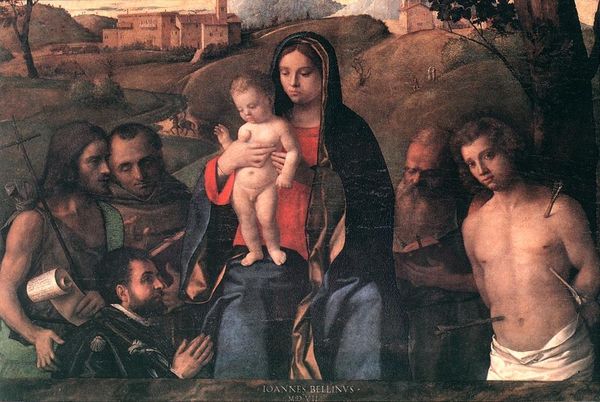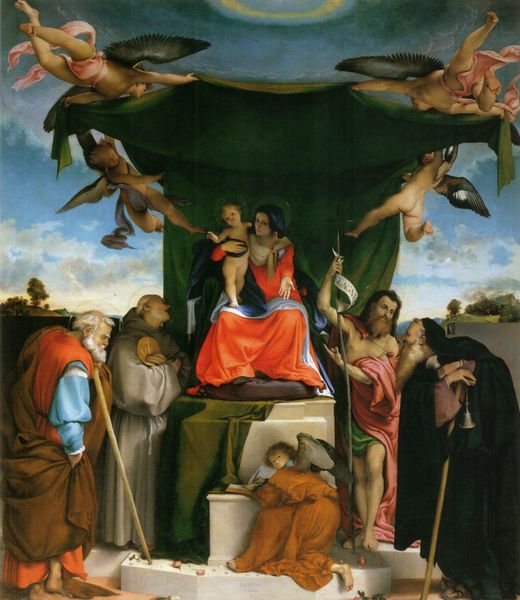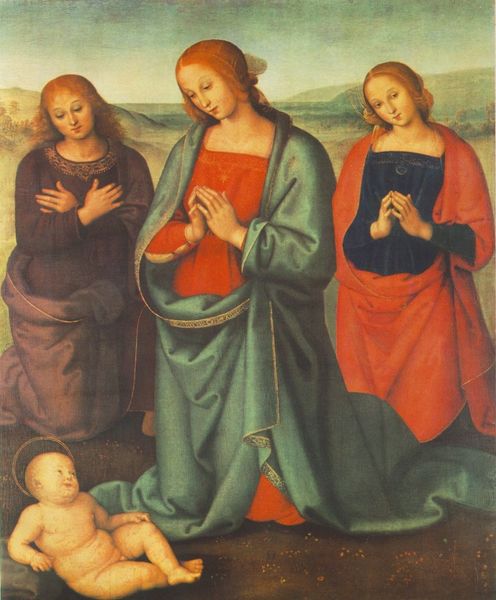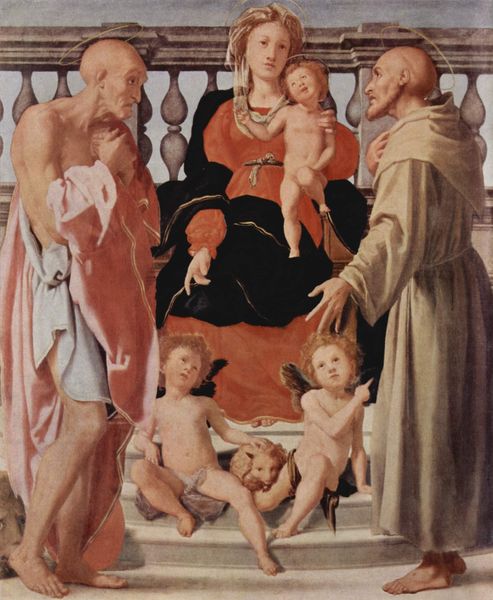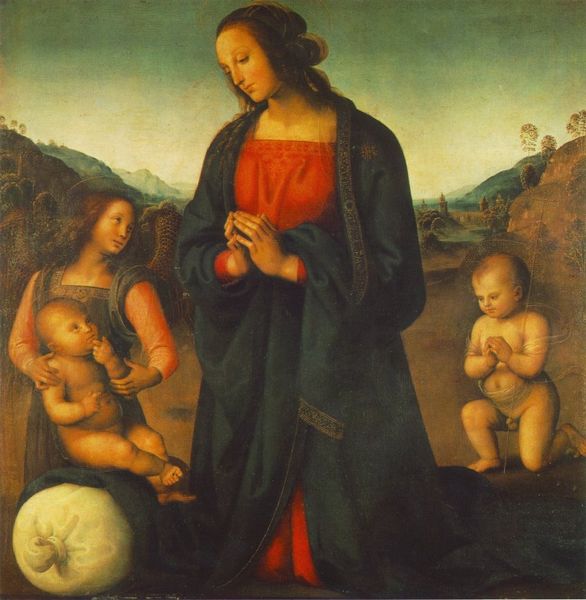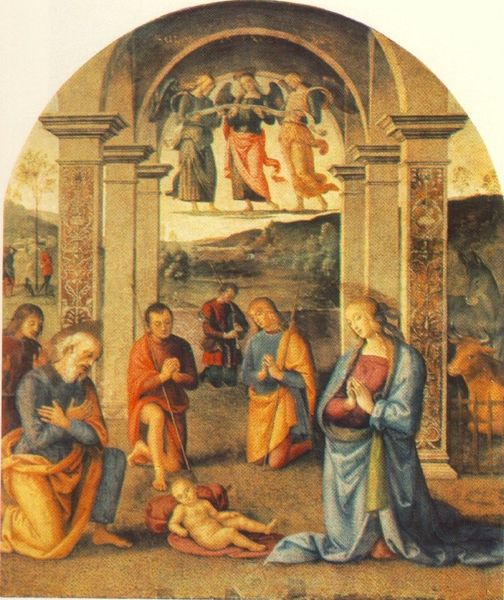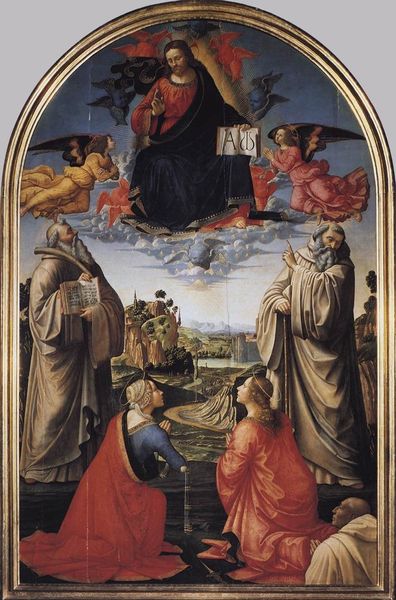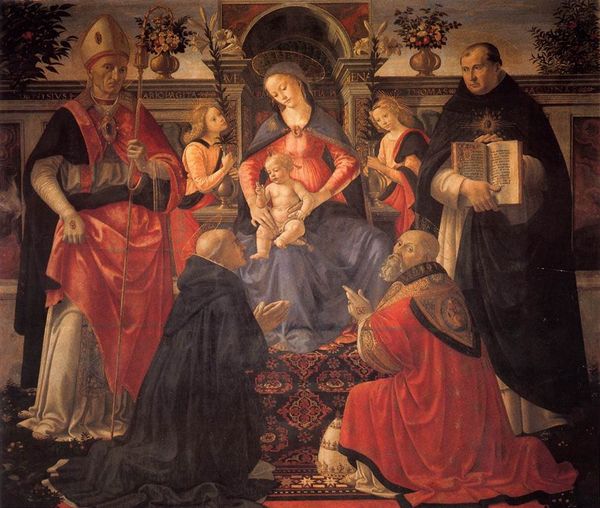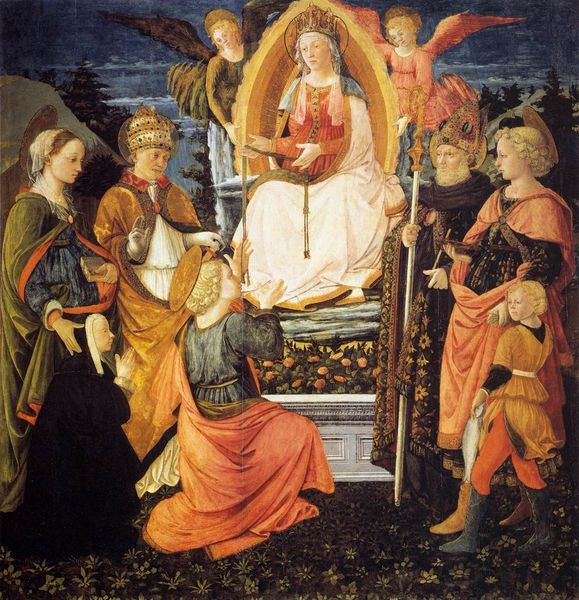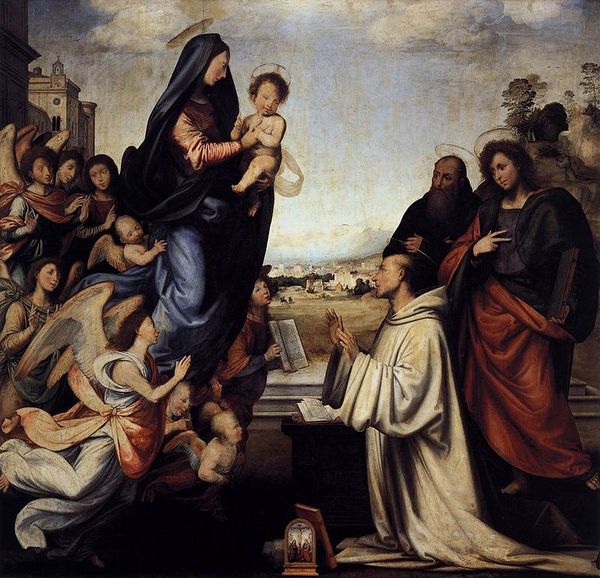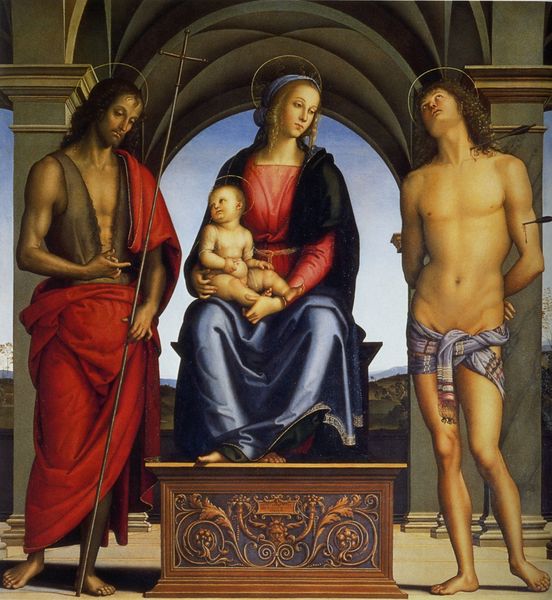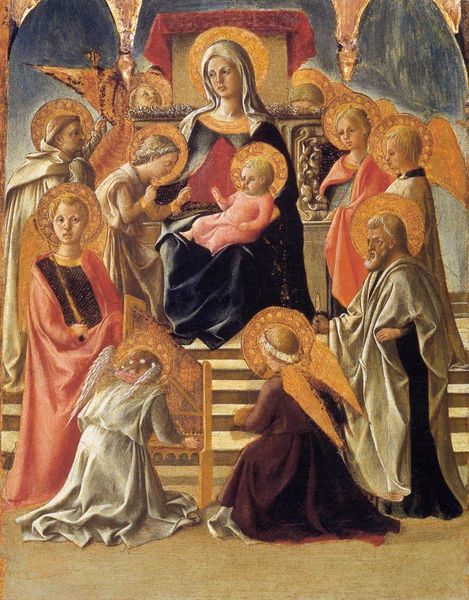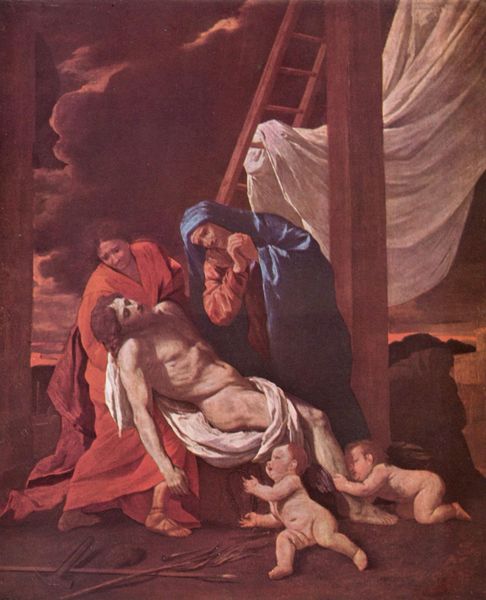
tempera, painting, fresco
#
portrait
#
allegory
#
tempera
#
painting
#
figuration
#
fresco
#
child
#
christianity
#
history-painting
#
italian-renaissance
#
early-renaissance
#
christ
Copyright: Public domain
Curator: Here we have Pietro Perugino's "Madonna and Child with Four Saints," also known as the Tezi Altarpiece, dating from around 1500. Editor: It strikes me as serene, almost unsettlingly so. The figures seem suspended in a dream, a very formally arranged dream. Is it tempera or fresco? Curator: The work is rendered in tempera. Perugino was a master of this medium, enabling those striking colour harmonies and subtly modulated surfaces you observe. Editor: The Madonna's gaze… distant, regal. And the child, such a robust little fellow. Almost too real against the stylized saints. There’s a strange disjunction that creates a sort of pull, like gravity reversed. Curator: Notice how the composition leads the eye upward? From the kneeling saints in the foreground, John the Baptist and Saint Jerome, past the hovering putti to the Madonna and child, flanked by Saint John the Evangelist and Saint Augustine. Editor: Those cherubic faces! All of them. Quite bizarre, really, floating in that ambiguous space with that background. A gentle, very gentle dreamscape that is somewhat surreal. And that palette... oh, such gentle contrasts of primary colors! Did the painter want a soothing message for believers? Curator: It exemplifies Perugino's mastery of Renaissance ideals: harmony, balance, and the use of perspective to create an illusion of depth. And also think about the artist working in the cultural and theological context. Consider the patrons' goals. It gives further insights. Editor: Yes, there is an undeniable craft present. I would almost imagine this altarpiece was a form of escapism. Curator: A compelling insight! Editor: This art piece evokes, for me, that peculiar combination of reverence and unease that often accompanies sacred imagery. Curator: Indeed, the altarpiece is an invitation for contemplation of the divine, carefully constructed to evoke a specific response. Thank you! Editor: The pleasure's all mine! Thank you for sharing the history and formalism with such acuity!
Comments
No comments
Be the first to comment and join the conversation on the ultimate creative platform.
